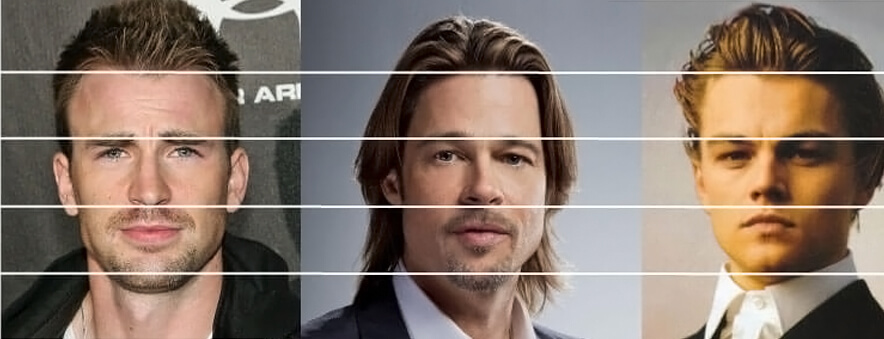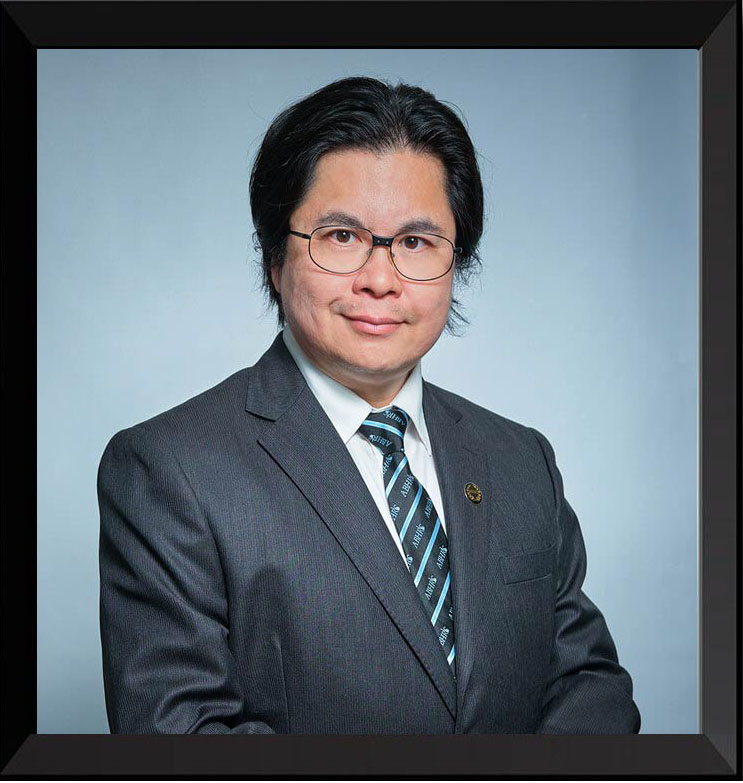The Phi Rule
The Phi rule, also known as the Golden Ratio, is a mathematical principle that has been used to define beauty in terms of proportion and balance. In facial aesthetics, the Phi rule can be applied by measuring the ratios of various facial elements and ensuring they align closely with the golden ratio of 1.618. For example, the ideal facial structure might include the following based on the Phi rule:
1. Width of the Face: The width of the face at the level of the eyes should ideally be about 1.618 times the width of the mouth.
2. Position of the Eyes: The distance between the eyes should ideally be 1.618 times the width of an eye.
3. Length of the Face: The length of the face from the top of the forehead to the bottom of the chin divided into three equal parts (forehead to eyebrow, eyebrow to base of the nose, and base of the nose to chin) should ideally follow the golden ratio.
These proportions are considered universally appealing and are used by plastic surgeons and dermatologists to guide cosmetic treatments and procedures, aiming to bring facial features closer to these ideal ratios. This mathematical approach is believed to enhance facial harmony and attractiveness by aligning facial features with these aesthetically pleasing and naturally occurring proportions.
Da Vinci's Golden Rule of Thirds

Da Vinci's Golden Rule of Thirds
In Western countries the proportion of beauty is Da Vinci's Golden Rule of Third.
In hairline design the Anterior-most point is set according to this rule. An ideal face should have equal vertical distance from:
• Lower 1/3 - Lowest point of hairline to Glabella
• Middle 1/3 - Glabella to base of nose
• Upper 1/3 - Base of nose to tip of chin
Violation of the Golden Rule
From our observation not everyone fits into this rule, especially the Asians. The 3 facial parts as mentioned do not have to be exactly equal to look good. There are still some rules regarding their proportion if to look good.
Example 1 : Smaller chin
• Most Chinese and some Caucasians have a smaller chin.
• A small chin gives an elegant and gentleman look.
• The hairline has to set lower accordingly.
Example 2 : Longer chin
• This type is seen mainly in the Caucasians
• Long chin induces a sporty and adventurous charactesr.
• The hairline has to be set higher accordingly.
Our New Golden Rule
• We have studies hundreds of pictures of "attractive" celebrities.
• After checking and comparing their facial proportions, we have developed a new Golden Rule.
• The result of our study, "the New Landmarks in Hairline Design", was presented in the ISHRS Annual Scientific Meeting (2009 Amsterdam, Netherland).
Hairline Restore Objectives Using Da Vinci's Rule and Phi Principle


Objective 1 : Re-frame the Face
Your face is like a framed pictures, with the eyes being the focus. When you talk, the audience will look at your eyes to show interest and attention. With receded hairline, the upper frame is lost. Eye contact will unintentionally shift to your empty forehead - quite an embarrassment for both!
The first priority in hair transplant is therefore to re-frame the faces so that eyes of audience are not drawn toward.
Objective 2 : Re-establish Lost Aesthetic Balance
All the facial features such as eyes, nose, hairline, lips, are related to each other in proportions. Dr. Marquardt quantified beauty scientifically by developing the "Perfect Face" Mask based on the Phi ratio 1 : 1.618. The closer various facial features such as length of nose, position of eyes and length of chin correlate to this mask, the more aesthetically pleasing the face is. Hairline provides a complementary balance to the other facial structures. Using the Da Vinci and Phi Principles Hair transplant can re-establish the aesthetic balance that was lost in the balding process.
Objective 3 : Create Age-Appropriate or Younger Look
The loss of hair is associated with old age. The apparent loss of vital energy adversely affects employment and social interaction. By restoring a hairline and adding on hair to bald scalp, an age-appropriate or even younger look can be achieved.
Objective 4 : Increase Facial Attractiveness
We judge by pattern recognition. The followings are basic criteria for facial attractiveness. If any one of these features is disturbed, the face will be distorted losing its attractiveness. By properly designing a hairline the following can be restored:
• Symmetry
• Balance
• Proportion
Message from the Doctor
Welcome to “Doctor's Talk,” where I’ll talk about everything related to hair loss and hair transplants. This series is here to help you understand more about how hair treatments work and what you can expect from them. The information provided is based on my 18 years of experience in dealing with hair loss.
Disclaimer -
Please note that this series is purely educational. Reading these posts does not guarantee my services, nor are they intended for business promotion. Information provided is not guaranteed to be up-to-date and should not be considered a substitute for professional medical advice.
Any opinions discussed may not be universally accepted or applicable to all individuals. Always consult a healthcare professional before making any decisions related to your health.

